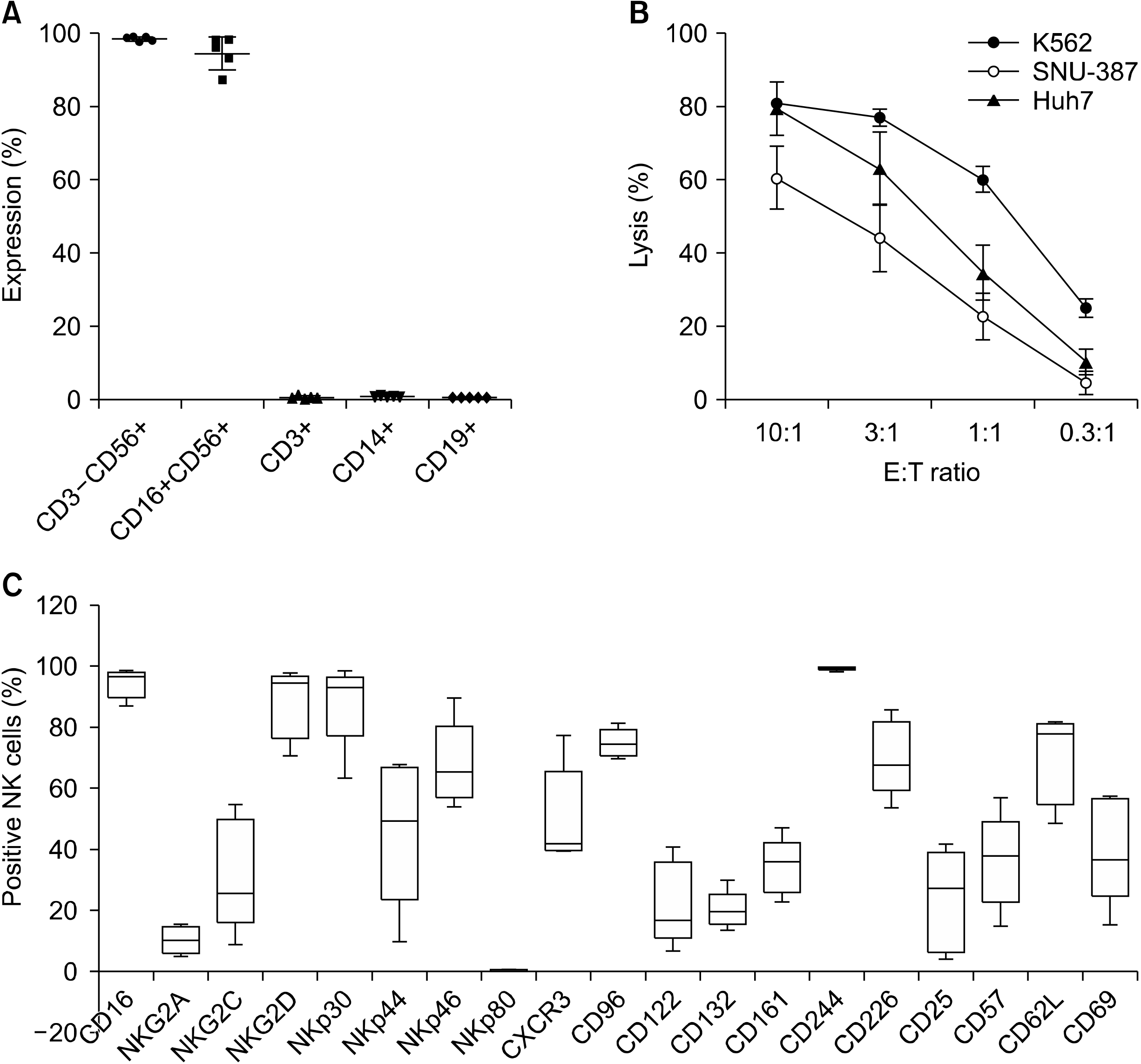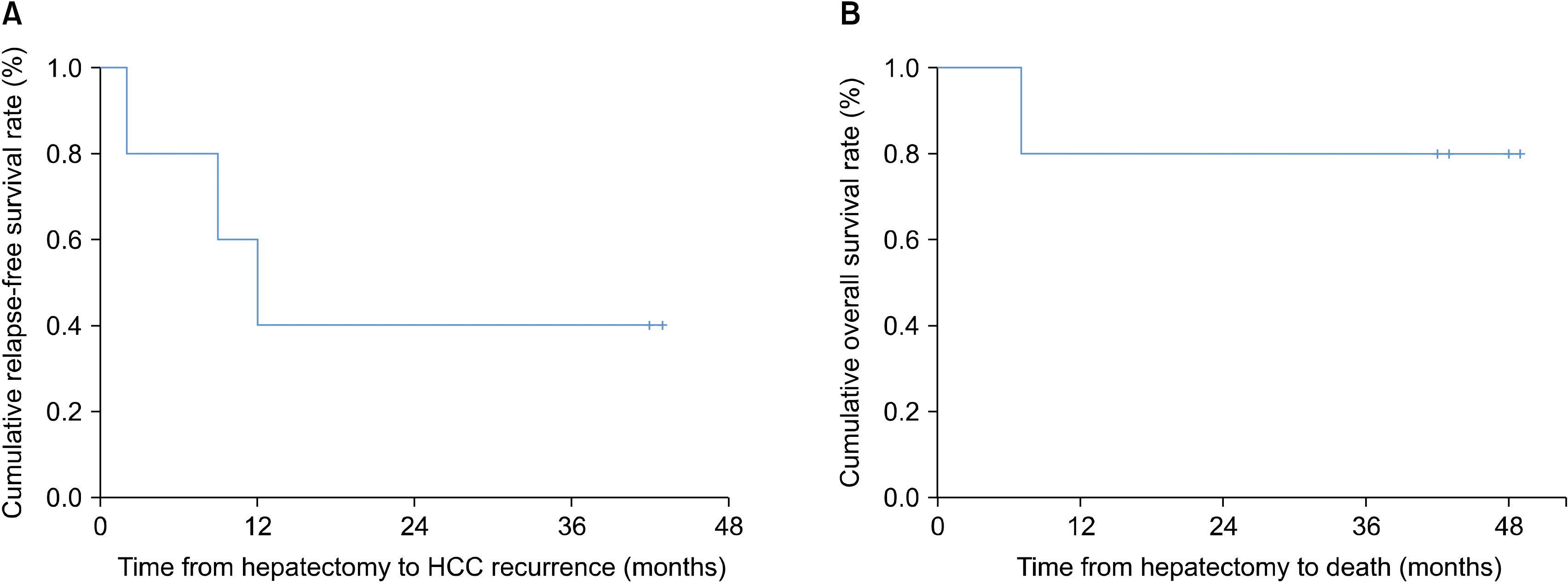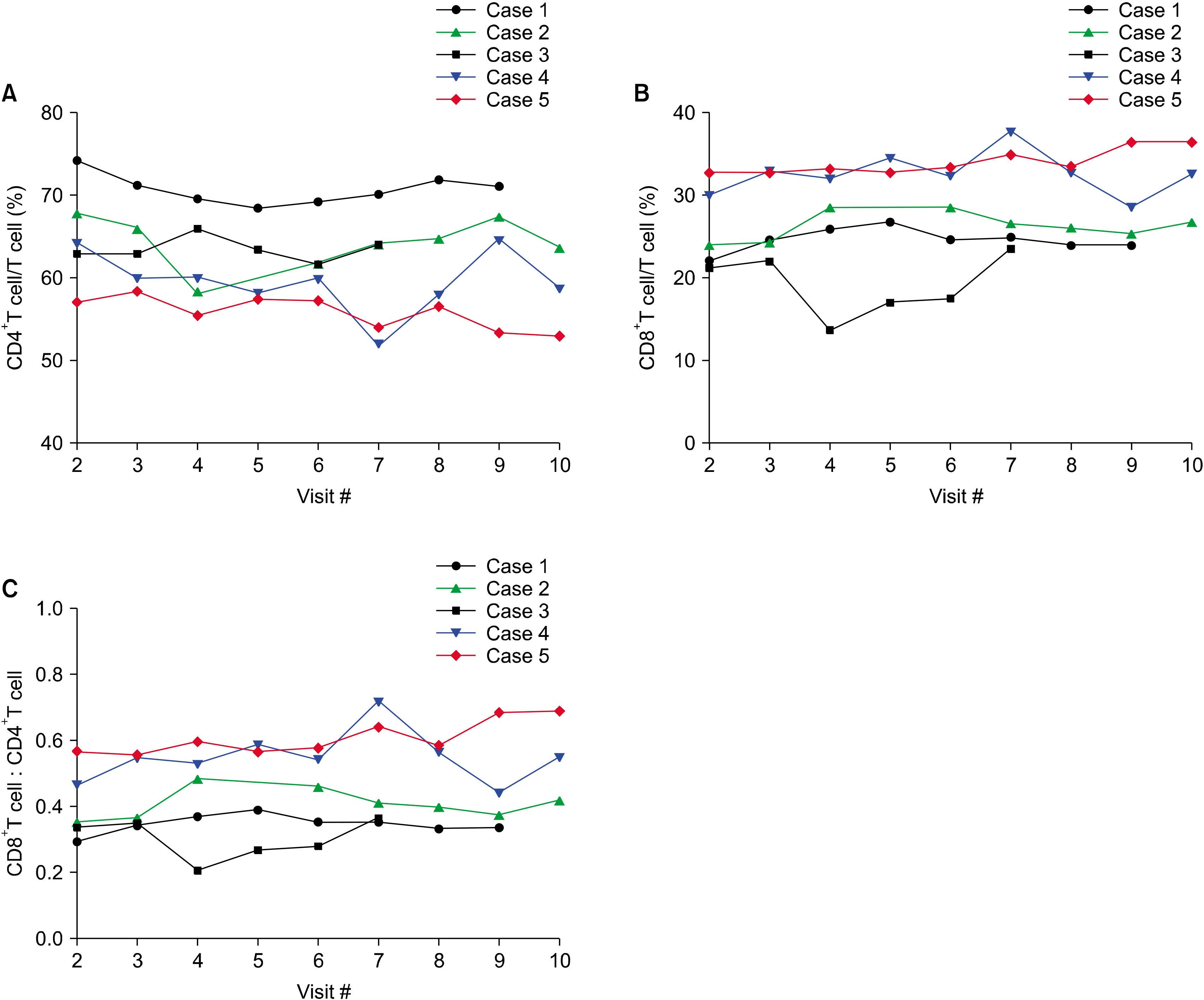1. Yu SJ. 2016; A concise review of updated guidelines regarding the management of hepatocellular carcinoma around the world: 2010-2016. Clin Mol Hepatol. 22:7–17. DOI:
10.3350/cmh.2016.22.1.7. PMID:
27044761. PMCID:
PMC4825164.

2. Kim JM, Kwon CH, Joh JW, Park JB, Lee JH, Kim SJ, et al. 2014; Outcomes after curative hepatectomy in patients with non-B non-C hepatocellular carcinoma and hepatitis B virus hepatocellular carcinoma from non-cirrhotic liver. J Surg Oncol. 110:976–981. DOI:
10.1002/jso.23772. PMID:
25171344.

3. Kim JM, Kwon CH, Joh JW, Park JB, Lee JH, Kim SJ, et al. 2014; Differences between hepatocellular carcinoma and hepatitis B virus infection in patients with and without cirrhosis. Ann Surg Oncol. 21:458–465. DOI:
10.1245/s10434-013-3302-1. PMID:
24132624.

4. Kim JM, Yi NJ, Kwon CHD, Lee KW, Suh KS, Joh JW. 2018; Early disseminated recurrence after liver resection in solitary hepatocellular carcinoma. Ann Surg Treat Res. 94:129–134. DOI:
10.4174/astr.2018.94.3.129. PMID:
29520346. PMCID:
PMC5842084.

5. Jung SM, Kim JM, Choi GS, Kwon CHD, Yi NJ, Lee KW, et al. 2019; Characteristics of early recurrence after curative liver resection for solitary hepatocellular carcinoma. J Gastrointest Surg. 23:304–311. DOI:
10.1007/s11605-018-3927-2. PMID:
30215196.

6. Samuel M, Chow PK, Chan Shih-Yen E, Machin D, Soo KC. 2009; Neoadjuvant and adjuvant therapy for surgical resection of hepatocellular carcinoma. Cochrane Database Syst Rev. 2009:CD001199. DOI:
10.1002/14651858.CD001199.pub2. PMID:
19160192. PMCID:
PMC7096780.

7. Bruix J, Takayama T, Mazzaferro V, Chau GY, Yang J, Kudo M, et al. 2015; Adjuvant sorafenib for hepatocellular carcinoma after resection or ablation (STORM): a phase 3, randomised, double- blind, placebo-controlled trial. Lancet Oncol. 16:1344–1354. DOI:
10.1016/S1470-2045(15)00198-9.
8. Heimbach JK, Kulik LM, Finn RS, Sirlin CB, Abecassis MM, Roberts LR, et al. 2018; AASLD guidelines for the treatment of hepatocellular carcinoma. Hepatology. 67:358–380. DOI:
10.1002/hep.29086. PMID:
28130846.

9. European Association for the Study of the Liver. 2018; Electronic address: easloffice@easloffice.eu; European Association for the Study of the Liver. EASL Clinical Practice Guidelines: Management of hepatocellular carcinoma. J Hepatol. 69:182–236.
10. Korean Liver Cancer Study Group (KLCSG). National Cancer Center, Korea (NCC). 2015; 2014 KLCSG-NCC Korea Practice Guideline for the management of hepatocellular carcinoma. Gut Liver. 9:267–317. DOI:
10.5009/gnl14460. PMID:
25918260. PMCID:
PMC4413964.
11. Lee JH, Lee JH, Lim YS, Yeon JE, Song TJ, Yu SJ, et al. 2015; Adjuvant immunotherapy with autologous cytokine-induced killer cells for hepatocellular carcinoma. Gastroenterology. 148:1383–1391.e6. DOI:
10.1053/j.gastro.2015.02.055. PMID:
25747273.

12. Yu R, Yang B, Chi X, Cai L, Liu C, Yang L, et al. 2017; Efficacy of cytokine-induced killer cell infusion as an adjuvant immunotherapy for hepatocellular carcinoma: a systematic review and meta-analysis. Drug Des Devel Ther. 11:851–864. DOI:
10.2147/DDDT.S124399. PMID:
28360510. PMCID:
PMC5364004.

13. Lee JH, Lee JH, Lim YS, Yeon JE, Song TJ, Yu SJ, et al. 2019; Sustained efficacy of adjuvant immunotherapy with cytokine-induced killer cells for hepatocellular carcinoma: an extended 5-year follow-up. Cancer Immunol Immunother. 68:23–32. DOI:
10.1007/s00262-018-2247-4. PMID:
30232520. PMCID:
PMC6326973.

14. Moretta A, Pende D, Locatelli F, Moretta L. 2009; Activating and inhibitory killer immunoglobulin-like receptors (KIR) in haploidentical haemopoietic stem cell transplantation to cure high-risk leukaemias. Clin Exp Immunol. 157:325–331. DOI:
10.1111/j.1365-2249.2009.03983.x. PMID:
19664139. PMCID:
PMC2745025.

16. Yang Y, Lim O, Kim TM, Ahn YO, Choi H, Chung H, et al. 2016; Phase I study of random healthy donor-derived allogeneic natural killer cell therapy in patients with malignant lymphoma or advanced solid tumors. Cancer Immunol Res. 4:215–224. DOI:
10.1158/2326-6066.CIR-15-0118. PMID:
26787822.

17. Lim O, Lee Y, Chung H, Her JH, Kang SM, Jung MY, et al. 2013; GMP-compliant, large-scale expanded allogeneic natural killer cells have potent cytolytic activity against cancer cells in vitro and in vivo. PLoS One. 8:e53611. DOI:
10.1371/journal.pone.0053611. PMID:
23326467. PMCID:
PMC3543306.

19. Hong YP, Li ZD, Prasoon P, Zhang Q. 2015; Immunotherapy for hepatocellular carcinoma: from basic research to clinical use. World J Hepatol. 7:980–992. DOI:
10.4254/wjh.v7.i7.980. PMID:
25954480. PMCID:
PMC4419101.

20. Ungefroren H, Sebens S, Seidl D, Lehnert H, Hass R. 2011; Interaction of tumor cells with the microenvironment. Cell Commun Signal. 9:18. DOI:
10.1186/1478-811X-9-18. PMID:
21914164. PMCID:
PMC3180438.

21. Zamarron BF, Chen W. 2011; Dual roles of immune cells and their factors in cancer development and progression. Int J Biol Sci. 7:651–658. DOI:
10.7150/ijbs.7.651. PMID:
21647333. PMCID:
PMC3107473.

22. Korangy F, Höchst B, Manns MP, Greten TF. 2010; Immune responses in hepatocellular carcinoma. Dig Dis. 28:150–154. DOI:
10.1159/000282079. PMID:
20460904.

23. Harding JJ, El Dika I, Abou-Alfa GK. 2016; Immunotherapy in hepatocellular carcinoma: primed to make a difference? Cancer. 122:367–377. DOI:
10.1002/cncr.29769. PMID:
26540029.

24. Aerts M, Benteyn D, Van Vlierberghe H, Thielemans K, Reynaert H. 2016; Current status and perspectives of immune-based therapies for hepatocellular carcinoma. World J Gastroenterol. 22:253–261. DOI:
10.3748/wjg.v22.i1.253. PMID:
26755874. PMCID:
PMC4698490.

25. Chew V, Chen J, Lee D, Loh E, Lee J, Lim KH, et al. 2012; Chemokine-driven lymphocyte infiltration: an early intratumoural event determining long-term survival in resectable hepatocellular carcinoma. Gut. 61:427–438. DOI:
10.1136/gutjnl-2011-300509. PMID:
21930732. PMCID:
PMC3273680.

26. Lim KC, Chow PK, Allen JC, Chia GS, Lim M, Cheow PC, et al. 2011; Microvascular invasion is a better predictor of tumor recurrence and overall survival following surgical resection for hepatocellular carcinoma compared to the Milan criteria. Ann Surg. 254:108–113. DOI:
10.1097/SLA.0b013e31821ad884. PMID:
21527845.

27. Kim JM, Kwon CH, Joh JW, Park JB, Lee JH, Kim SJ, et al. 2013; PIVKA-II is a useful marker in patients with modified UICC T3 stage hepatocellular carcinoma. Hepatogastroenterology. 60:1456–1462.
28. Imamura H, Matsuyama Y, Tanaka E, Ohkubo T, Hasegawa K, Miyagawa S, et al. 2003; Risk factors contributing to early and late phase intrahepatic recurrence of hepatocellular carcinoma after hepatectomy. J Hepatol. 38:200–207. DOI:
10.1016/S0168-8278(02)00360-4.






 PDF
PDF Citation
Citation Print
Print






 XML Download
XML Download